By Dave Hemenway
Editor’s note: You’ll find previous installments on Dave’s restoration of a forlorn but solid Cape Dory 30 here.
Once I got Moonshadow cleaned up, I realized that she is clearly my cruising boat for the future. She’s the perfect size for me as she’s long enough and spacious enough for serious cruising, yet small enough to easily handle single-handed with her cutter rig, and relatively light gear. She is also a relatively heavy boat at ten thousand pounds that is quite stable – a major consideration for me.
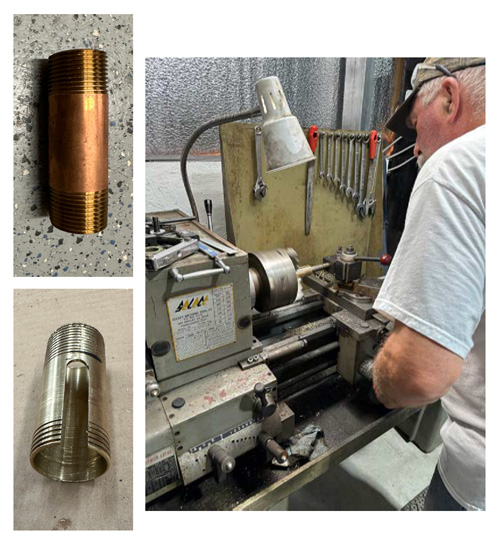 The work required to restore her has been much greater than I expected, which is normal for this type of project. If I really knew how long these projects would take, I would never have done any of them, which would have deprived me of much fun and resulted the loss of several boats. I’ve made many choices while restoring Moonshadow and enjoyed thinking about them.
The work required to restore her has been much greater than I expected, which is normal for this type of project. If I really knew how long these projects would take, I would never have done any of them, which would have deprived me of much fun and resulted the loss of several boats. I’ve made many choices while restoring Moonshadow and enjoyed thinking about them.
The most basic choice involved the cockpit hatch. Installing a cockpit hatch allowed access to her steering gear and the three thru-hulls that were underneath the old cockpit making these repairs much easier in addition to providing access to the front end of the Volvo diesel that is mounted with a V drive. This choice was easy to make because the cockpit sole was soft because of its degraded balsa core and had to rebuilt. Making the forward section into a hatch was easy to do with plywood and some nice solid wood. This work is in my comfort zone and it solved the access issue to important gear, which is one of the major criticisms of the Cape Dory 30. This job was relatively easy to accomplish and reaped a great benefit. It made maintenance of the thru-hulls, engine, and steering gear much easier.
There were other choices that had to be made while working on her and responding to other responsibilities. For example, three Typhoons needed to be saved as part of the Typhoon Class Association’s Save Our Sailboats (SOS) effort. I spent a few days rehoming one of them and retrieving the other two. If I hadn’t rescued them, there would be three fewer Typhoons in existence – a choice I couldn’t accept. Otherwise, I’ve spent all my boating time working on Moonshadow. However, I’m usually wiped out after four to six hours working on her, especially when doing bottom work. I spent approximately 72 hours removing the 25+ year old bottom paint and preparing the bottom for new paint. This work was very rewarding as her bottom is in excellent shape with only a few imperfections that have been repaired. She has no blisters anywhere on the hull!
One major choice was switching Moonshadow’s steering from a pedestal with a wheel to a tiller system. I decided to make this change because it was consistent with my needs. While some people may disagree with this change, others thought it was a great idea. Tillers are much more sensitive to the boat’s action than wheel steering and much easier to utilize for self-steering with a simple electric tiller pilot or a windvane system. The bottom line is I wanted Moonshadow to be the way I want her, and now she is with her simple tiller steering.
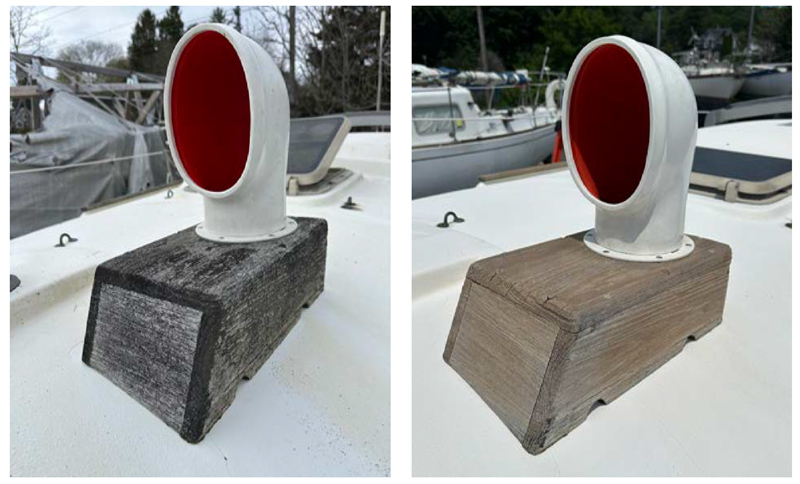
I thought this would be a relatively easy project, but it wasn’t because Moonshadow’s rudder shaft is 3/4” in diameter and the tiller connector I had left over from another project was made for a 1” rudder shaft. I thought it would be simple to take a three-inch piece of 3/4” bronze connector pipe which was close to the necessary size. The inside diameter needed to be increased by six thousandths of an inch while the outside diameter needed to be decreased by four thousandths of an inch. In addition, the keyways needed to be modified to properly join the rudder post with the tiller head piece.
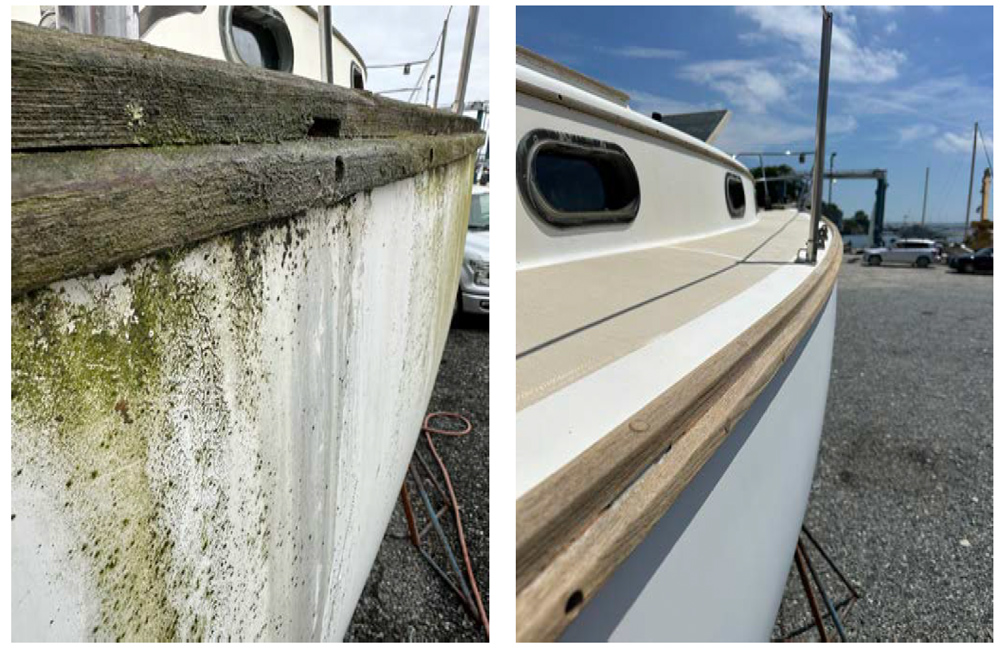
I tried to figure out how to do this work, but soon realized I was way over my head and needed help. I called my friend Andy who is an excellent, innovative machinist. He said “Bring it over and let’s see what we can do.” In a couple hours he made the necessary connector diameters using his lathe and modified the shaft key with his milling machine to fit the 1/4” slot on the rudder post and the 5/16” slot on the tiller connector piece. I was fascinated watching him work and he enjoyed the challenge. Everything went together perfectly and now I have a nice simple and robust tiller steering system. While I have trouble cutting wood to a 1/16”, Andy works with metal to less than a thousandth of an inch. Truly amazing to me! It’s wonderful to have such talented friends!
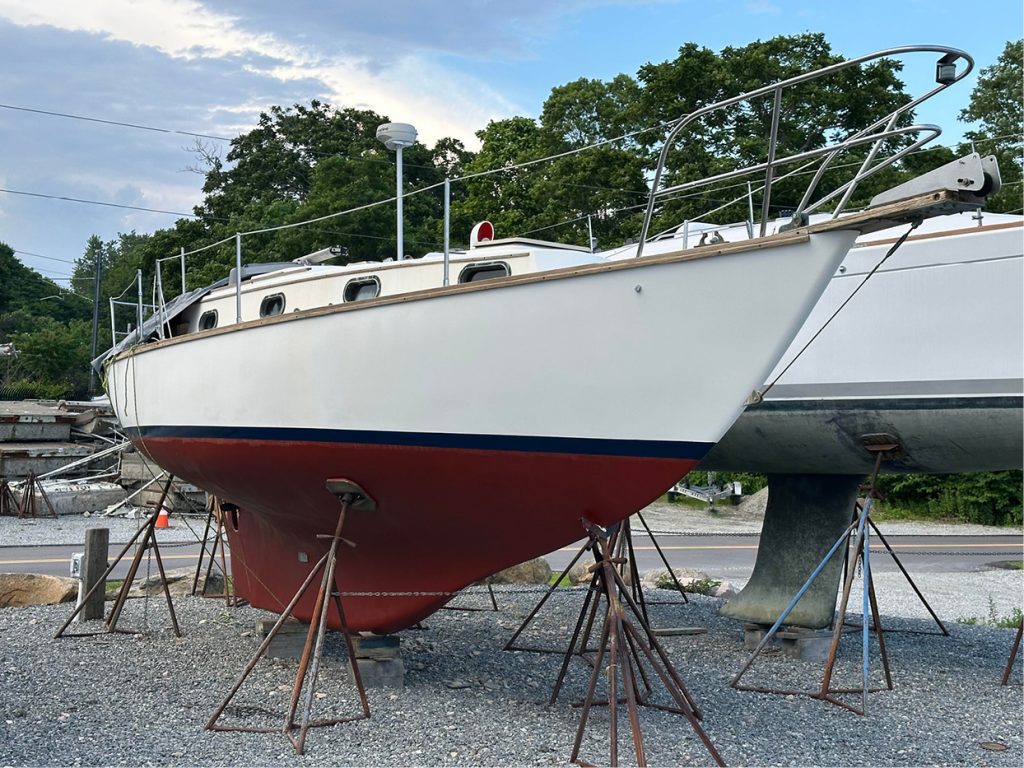
Another choice was whether to paint or compound and wax the hull. I asked my friend Dave to look over Moonshadow’s hull and make a recommendation on the best course of action. He said her hull was in good shape and should clean up nicely with compounding and waxing. However, I needed to thoroughly clean the coach roof, deck and the teak trim that hadn’t been cleaned for many years while sitting beside the main East Coast Amtrak railroad. Scrubbing pads and a small scrub brush produced very satisfactory results. I am always amazed how teak can be rejuvenated with a little elbow grease. As usual, this work took three times as long as I’d expected, but was clearly worth the effort. I needed to do this before the topsides work because the Soft Scrub with bleach would’ve destroyed any wax that I applied.
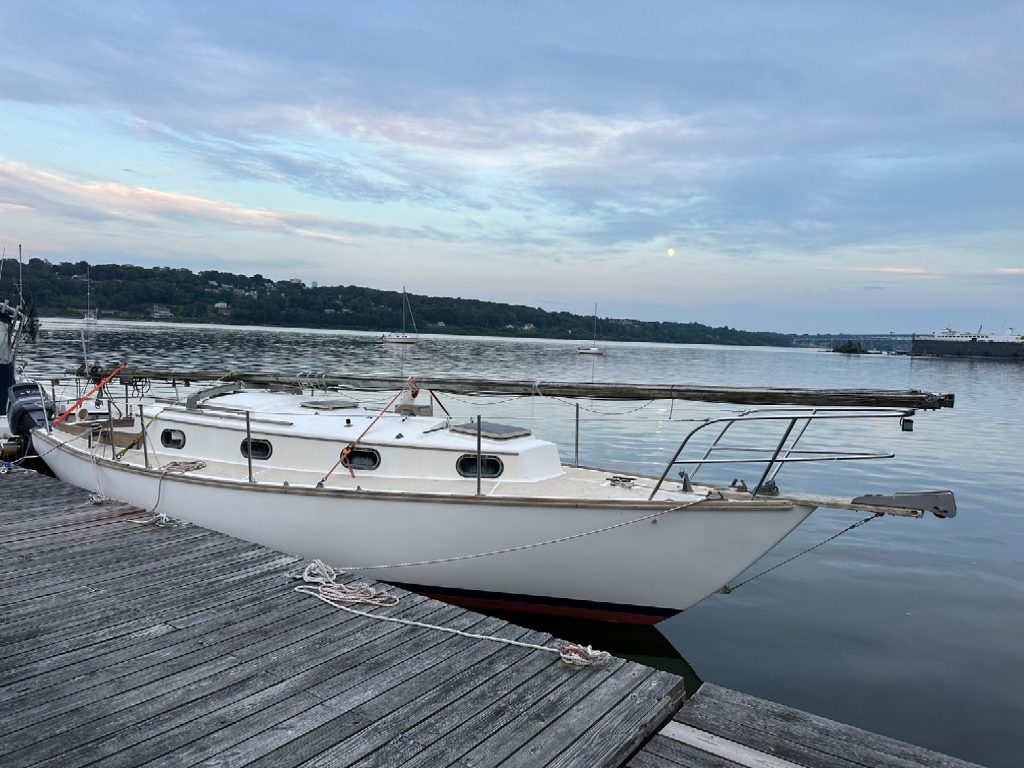
Moonshadow after launch, with Blue Moon moored offshore
Yet another choice was whether to remove two old transducers that were mounted to the hull. Originally, I was going to just leave them as I had so much else to do but as I got closer to being ready to launch her and had the time to do this chore, I decided to remove them since they probably wouldn’t work and there was a chance of them leaking. I will mount an internal transducer that transmits and receives its signals through the hull as I continue restoring Moonshadow. This is a good example of how our goals can change as our restoration projects evolve, which is why it is wise to have a flexible schedule to accommodate these constructive changes to our plans.
While I have many more tasks to do to finish refurbishing Moonshadow, she will be in the water by the time you read this. Her launch was one month after I’d planned. The weather was not always accommodating, with a wet May and several days of 100-degree temperatures. The yard was accommodating and I’m pleased that I’ve done quality work which puts Moonshadow on the path of being restored properly. I’ll continue to work on her at her Thames River mooring while sailing my Typhoon Daysailer named Blue Moon (pictured below in the distance). She is the little sister to Moonshadow. To me, this is the best of both worlds – working on a great boat while sailing another and having the opportunity to restore a boat as I envision her. I look forward to thinking about more choices I’ll have to make and figuring out how to accomplish them. ■
Dave Hemenway, Northeast fleet captain of the Cape Dory Sailboat Owners Association, lives in Eastern Connecticut and sails out of Boating on the Thames in New London. He’s been sailing and messing about in boats for his whole life and has recreationally sailed Finns on and off since the 1970s. His primary cruising boat is a Dickerson 36 yawl that he’s maintained and improved for 35 years. Since retiring from higher education, he has worked at Cappy’s Boat Shop where he reports to his dog, Cappy.



